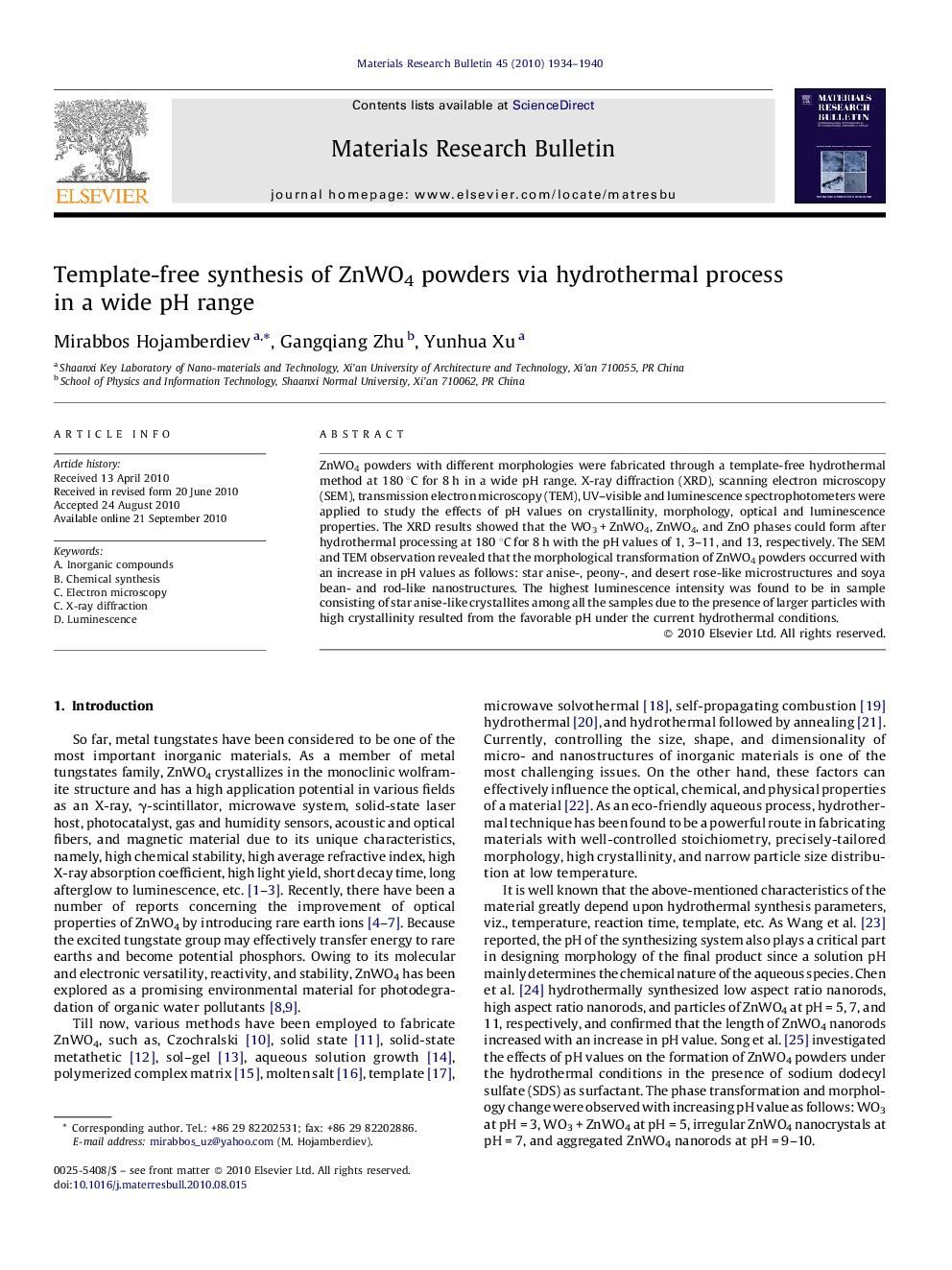| Article ID | Journal | Published Year | Pages | File Type |
|---|---|---|---|---|
| 1490690 | Materials Research Bulletin | 2010 | 7 Pages |
ZnWO4 powders with different morphologies were fabricated through a template-free hydrothermal method at 180 °C for 8 h in a wide pH range. X-ray diffraction (XRD), scanning electron microscopy (SEM), transmission electron microscopy (TEM), UV–visible and luminescence spectrophotometers were applied to study the effects of pH values on crystallinity, morphology, optical and luminescence properties. The XRD results showed that the WO3 + ZnWO4, ZnWO4, and ZnO phases could form after hydrothermal processing at 180 °C for 8 h with the pH values of 1, 3–11, and 13, respectively. The SEM and TEM observation revealed that the morphological transformation of ZnWO4 powders occurred with an increase in pH values as follows: star anise-, peony-, and desert rose-like microstructures and soya bean- and rod-like nanostructures. The highest luminescence intensity was found to be in sample consisting of star anise-like crystallites among all the samples due to the presence of larger particles with high crystallinity resulted from the favorable pH under the current hydrothermal conditions.
